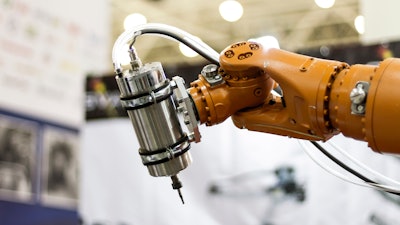
We are at an inflection point. A game-changing, jump-the-shark moment when manufacturing organizations will no longer be satisfied with the process capabilities of the past because newer, more efficient, more predictive process automation technologies are available.
The research firm Gartner, Inc. coined the term “hyperautomation” to describe the phenomenon, but other analysts also point to this new phase of process automation. IDC calls it Intelligent Process Automation, and Forrester Research refers to Digital Process Automation.
To define it, Gartner says that “hyperautomation deals with the application of advanced technologies, including artificial intelligence (AI) and machine learning (ML) to increasingly automate processes and augment humans.” Hyperautomation is all about connecting people, process, equipment and the job to be done, and reaching a more perfect process efficiency to improve your manufacturing.
It’s no small movement. The market for hyperautomation-enabling technologies is projected to reach $596 billion in 2022, up nearly 24 percent from $482 billion in 2020.
Crises Often Hastens Technology
The pandemic quarantine made consumers more open to all things digital. It accelerated the adoption and implementation of hyperautomation and many other technologies that would have taken years to become mainstream. It won’t be long before hyperautomation-enabling technologies such as robotic process automation (RPA), low-code application platforms (LCAP), AI and virtual assistants become a “condition of survival” for manufacturing operations.
Think about process in its purest form. It’s a series of actions or steps that link people, systems and even equipment to achieve a desired goal. Hyperautomation leverages technologies to drive efficiency throughout the process through automation of repetitive tasks, improved communication between the actors of a process and improved end user experience.
There’s no single technology that defines ‘hyperautomation’; it’s a collection of leading technologies working together to get the job done in the most efficient way possible. Here are some of the technologies associated with hyperautomation.
- Robotic process automation is the technology used to automate the repetitive tasks that a human needs to perform through a user interface. The RPA tool learns how to perform a specific task according to a set of rules it’s been taught, capturing data and putting it where you need it. An effective process, but brittle to change if the user interface of the application being automated changes.
- Cognitive automation builds on RPA and is less hardwired. It learns the intent of a situation using available senses to execute a task, similar to the way humans learn, and can leverage senses like language awareness, using NLP (natural language processing), speech awareness, vision or historical observations. It then uses these senses to identify, suggest and even correct automation of an application using RPA technology.
- More modern applications leverage a no-code/low-code technology platform. In its simplest form, no-code can provide extensive personalization to individual users to optimize tasks for a given job. For more complex process or application changes, low-code can be used to allow an application to be extended, often by business analysts with minimal technical skills (i.e., the citizen developer).In the past such efficiencies would either be too costly to implement, would customize an application so much it would be a barrier to future upgrades or would become just another Excel spreadsheet to pass around the organization. Typically, these platforms provide a fully integrated user experience leveraging a myriad of capabilities to drive process optimization and are designed to be as open as possible for easy integration into third party systems.
- Finally, something that isn’t typically linked to hyperautomation, but I believe it should be, is integrated collaboration. It focuses on those tasks that are so unique they fall outside of the system capabilities altogether -- those situations where we resort to email, phone calls or “paper passing.” Though we cannot automate these one-off ad hoc tasks, having an integrated collaboration technology can provide some structure to the unstructured, linking decisions and information to the relevant parts of the process.
For manufacturing, it’s the combination of these and many other technologies that come together to allow the passing of information seamlessly. Even complex business processes can seek new levels of efficiency. Hyperautomation sets the framework for the integration of better data, leading to better decision making and better insights.
When looking at that big picture, identify communication silos that need to collaborate with each other using manual processes today, like spreadsheets or phone calls. These areas would benefit from embedded collaboration or real-time systems integration.
Global manufacturers are facing ever-increasing disruption, often caused by forces beyond their control. In order to survive and thrive, manufacturers must be able to innovate and change business models at unprecedented rates of speed. Leveraging hyperautomation is one of the steps to becoming an adaptive manufacturing enterprise.
Tony Winter is the Chief Technology Officer of QAD.






















